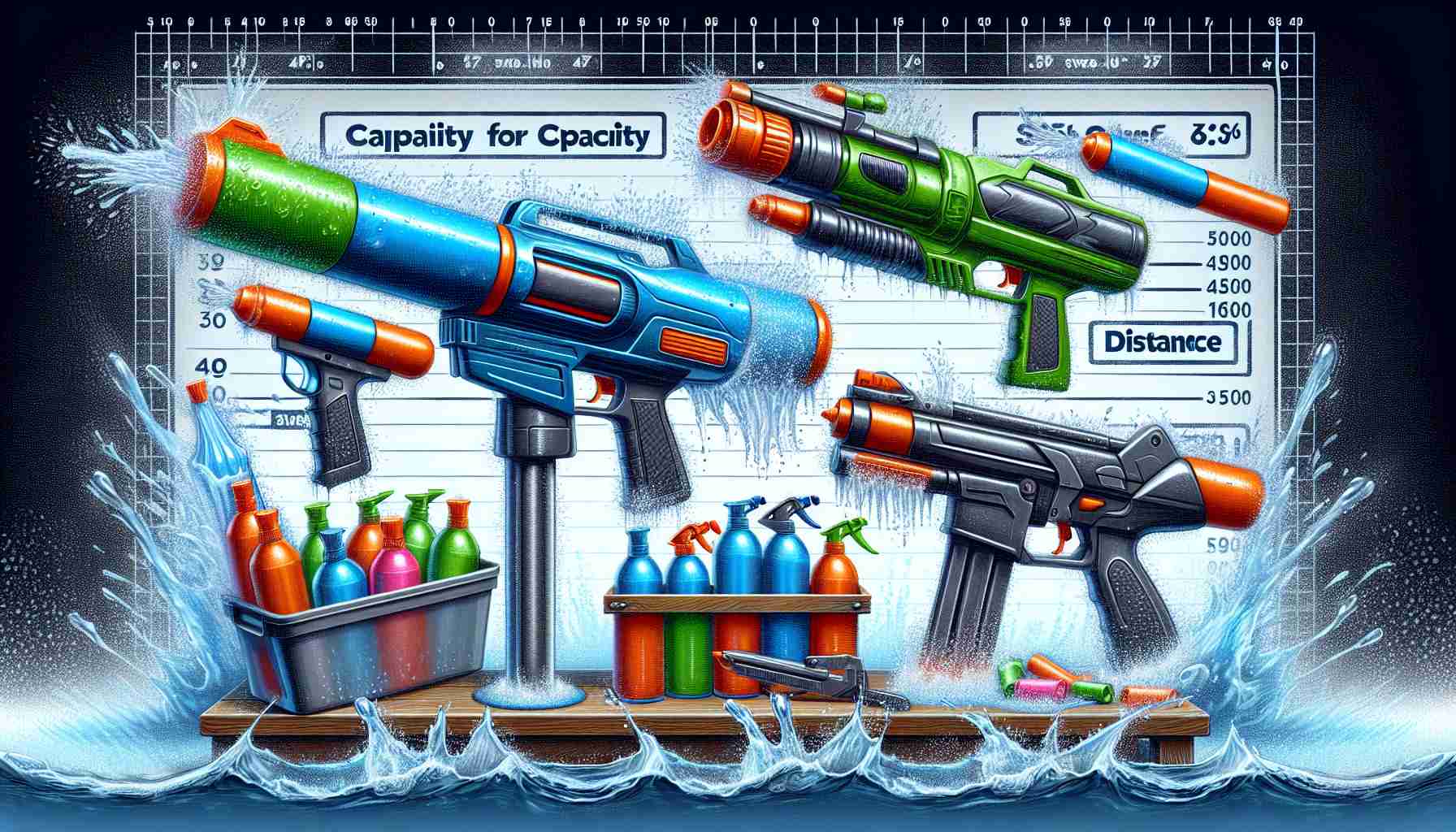Understanding Water Gun Performance Metrics
When it comes to evaluating water guns, determining their capacity and performance is crucial. Instead of simply measuring the water weight to determine capacity, a comprehensive assessment involves examining the overall soak factor, which considers both capacity and empty time.
Capacity and Soak Factor Analysis
Rather than just listing capacities, a detailed analysis of the soak factor provides better insights into a water gun’s effectiveness. The Temi blaster, despite its small capacity, surprises with an impressive soak factor due to its quick empty time. On the other hand, the Super Soaker Hydra dominates with its combination of high capacity and efficient empty time, outperforming its rivals.
Distance Testing for Added Dimension
In addition to capacity and soak factor, evaluating the shooting distance adds another layer to the water gun comparison. By measuring how far the water blasts reach on a consistent surface, a clearer picture emerges of the guns’ practical performance in outdoor settings.
Conclusion
By considering factors beyond just water weight, such as soak factor and shooting distance, a more comprehensive understanding of water gun capabilities can be achieved. Evaluating these metrics collectively provides a well-rounded assessment of a water gun’s performance potential.
Additional relevant facts:
– Water guns come in a variety of sizes and designs, including pistols, rifles, and backpack-style models.
– Some water guns are equipped with features like pump-action mechanisms or pressurized tanks for increased shooting power.
– Certain water guns are designed for specific activities, such as water fights, backyard play, or even professional competitions.
– Water guns have been popular toys for outdoor play for decades, with numerous brands and models available on the market.
Key questions and answers:
1. What factors should be considered when choosing a water gun for different types of activities?
– Factors to consider include capacity, soak factor, shooting distance, shooting power, and ease of use.
2. How can user experience vary based on the design of a water gun?
– The design can affect handling, reloading speed, and overall comfort during play.
3. Are there safety concerns associated with certain types of water guns?
– Some high-pressure water guns may pose safety risks if not used appropriately, especially with younger children.
Advantages:
– Water guns provide a fun way for both children and adults to cool off and engage in outdoor activities.
– Testing water guns can help consumers make informed decisions based on performance metrics.
– Water guns promote active play and can encourage social interaction during water battles.
Disadvantages:
– Some water guns may require regular maintenance to prevent malfunctions or damage.
– High-capacity water guns can be heavy when filled with water, affecting ease of use for some users.
– In some cases, water guns may lead to water wastage if used excessively in dry regions or drought-prone areas.
Key challenges or controversies:
– One challenge is ensuring fair testing conditions when comparing different water guns for performance metrics.
– Controversies may arise regarding the safety of certain water gun designs, particularly those with high pressure or potential for injury.
Related link:
NERF – Official website of the brand known for producing water guns and foam-based blasters.



